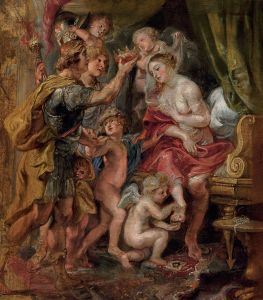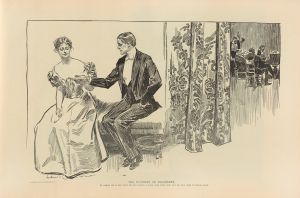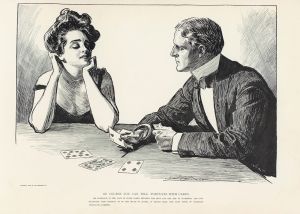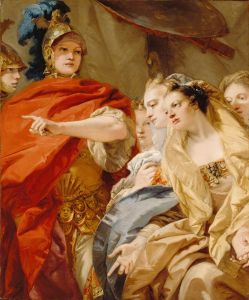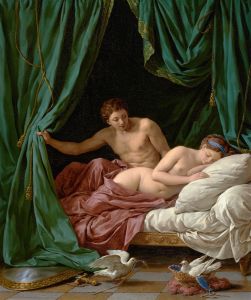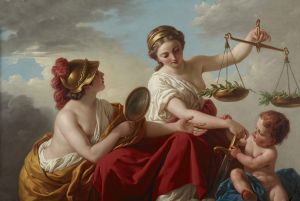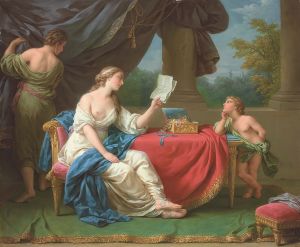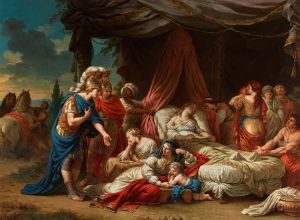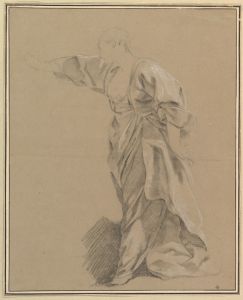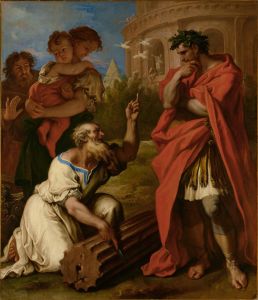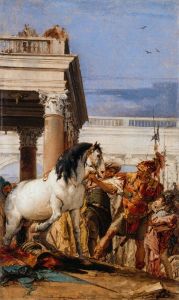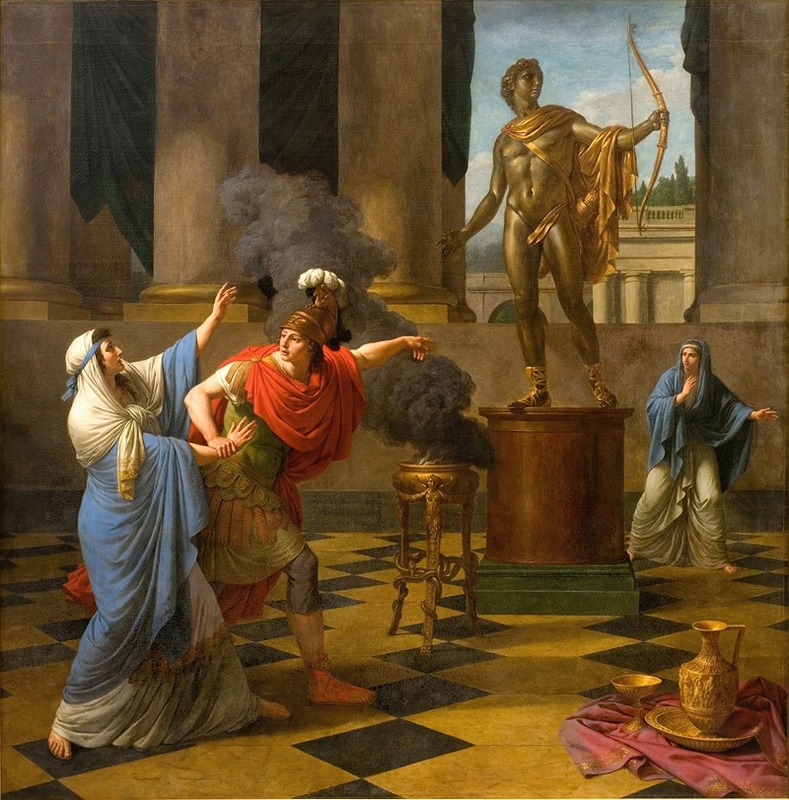
Alexander Consulting the Oracle of Apollo
A hand-painted replica of Louis-Jean-François Lagrenée’s masterpiece Alexander Consulting the Oracle of Apollo, meticulously crafted by professional artists to capture the true essence of the original. Each piece is created with museum-quality canvas and rare mineral pigments, carefully painted by experienced artists with delicate brushstrokes and rich, layered colors to perfectly recreate the texture of the original artwork. Unlike machine-printed reproductions, this hand-painted version brings the painting to life, infused with the artist’s emotions and skill in every stroke. Whether for personal collection or home decoration, it instantly elevates the artistic atmosphere of any space.
Louis-Jean-François Lagrenée was an 18th-century French painter known for his works that often depicted mythological and historical subjects. One of his notable paintings is "Alexander Consulting the Oracle of Apollo." This artwork reflects the neoclassical style that Lagrenée was known for, characterized by its clarity, order, and adherence to classical themes.
The painting portrays a scene from the life of Alexander the Great, the renowned Macedonian king and military leader. In this artwork, Alexander is depicted consulting the Oracle of Apollo. Oracles in ancient times were considered to be the mouthpieces of the gods, providing divine guidance and prophecy. The Oracle of Apollo, located at Delphi, was one of the most significant oracles in the ancient Greek world. It was believed that Apollo, the god of prophecy, communicated through the Pythia, a priestess who delivered cryptic messages that required interpretation.
Lagrenée's depiction of this scene captures the moment of interaction between Alexander and the Oracle. The composition likely includes classical architectural elements and figures dressed in ancient Greek attire, consistent with the neoclassical style. The painting would have been designed to convey the gravity and significance of the moment, highlighting Alexander's quest for divine insight as he embarked on his campaigns.
Lagrenée's work was influenced by the broader neoclassical movement, which sought to revive the artistic principles of ancient Greece and Rome. This movement was partly a reaction against the preceding Rococo style, which was seen as overly decorative and lacking in substance. Neoclassicism emphasized simplicity, symmetry, and an adherence to classical ideals, which is evident in Lagrenée's approach to composition and subject matter.
"Alexander Consulting the Oracle of Apollo" fits within Lagrenée's broader oeuvre, which often explored themes of heroism, virtue, and the influence of the divine. His works were well-regarded in his time, and he held several prestigious positions, including being a member of the Académie Royale de Peinture et de Sculpture and serving as a court painter.
The painting would have been appreciated not only for its aesthetic qualities but also for its intellectual engagement with classical antiquity. By depicting a historical figure like Alexander the Great in consultation with an oracle, Lagrenée invites viewers to consider the interplay between human agency and divine will, a theme that resonated with Enlightenment ideals of reason and inquiry.
While specific details about the painting's current location or provenance may not be readily available, Lagrenée's works are held in various collections, including major museums and galleries that focus on European art. His contributions to the neoclassical movement and his ability to convey complex themes through his art continue to be recognized and studied by art historians and enthusiasts alike.





